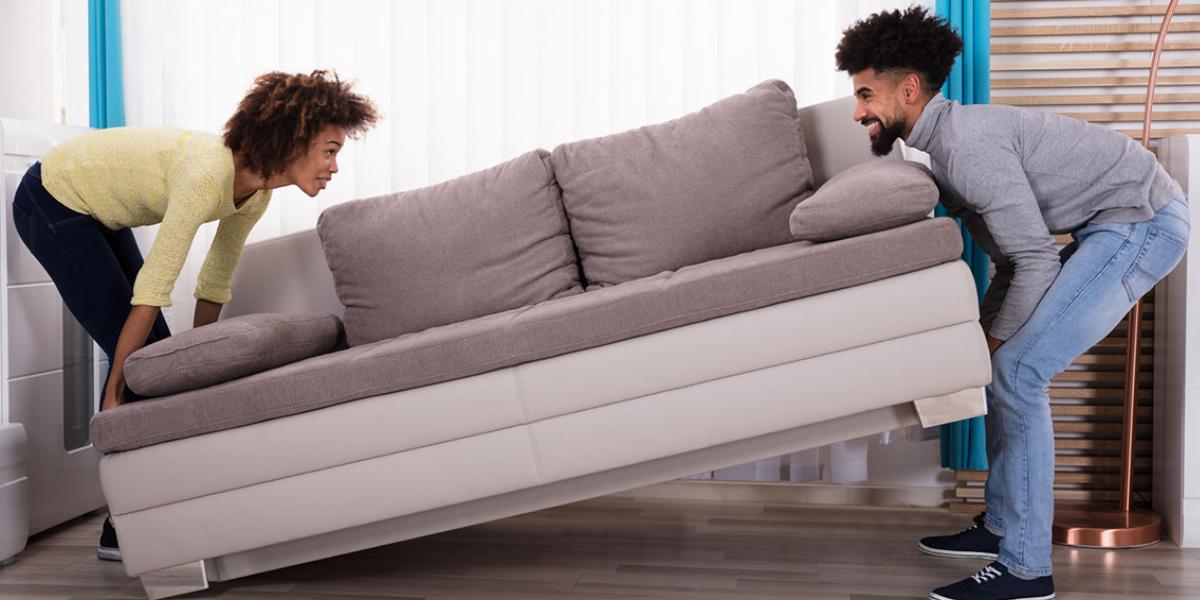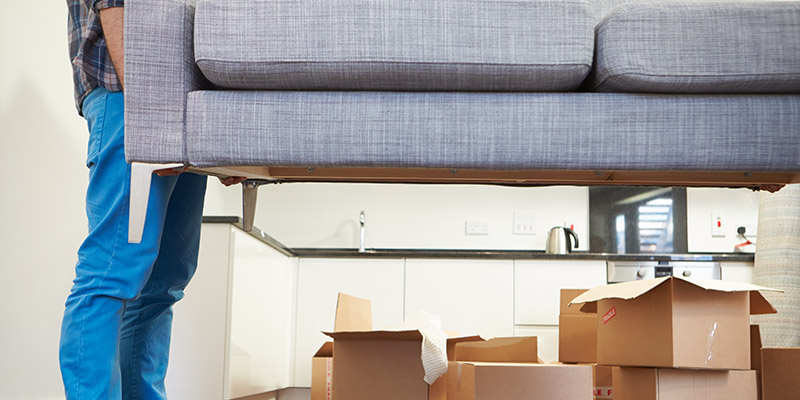
From throwing your back out to knicking the hardwood, getting rid of furniture can come with plenty of pitfalls. But we’re here to help. Grab a few extra sets of hands and use these techniques to learn how to move heavy furniture as safely and damage-free as the professionals. No helpers available and you need to get rid of furniture by yourself? We’ve got tips for that too.
Pro-Tip: If you haven’t rented a dumpster, make sure to check your trash service’s rules on furniture. Many companies won’t take it at the curb or will only pick it up during special bulk collection events. So, depending on the rules in your area, renting a home dumpster may be your best option. Our customers usually choose a 20 yard container for furniture removal.
Whether you’re moving out or clearing the way for brand new furnishings, your goal isn’t just to get the old stuff out. You want to accomplish that without scratching your floors or gouging holes in your walls. With a little preparation beforehand, we’ll show you how to move furniture while keeping your other belongings intact.
Get the dimensions of each piece of furniture you need to move and make sure they’ll fit through the doorways you’re planning to use. If you skip this step, you can end up wasting time—and wrecking doorframes—trying to shove items through an opening you’ll have to give up on anyway.
Take any doors between the room you’re clearing out and the driveway off their hinges. This will give you more room to maneuver so that you’re less likely to bump into walls.
Removing your doors is simple:
Cover each furniture item you’re moving with a blanket or wrap sharp edges in plastic wrap to avoid leaving scratches and scuffs on your walls. If you’re maneuvering down a particularly narrow hallway, it’s a good idea to tape sheets along the walls as an added layer of protection. You can also tape folded cardboard as a buffer over corners you know will be tough to maneuver around.
Pro-Tip: Use painter’s tape to attach sheets or cardboard to your walls. This way, you won’t take the paint with you when you pull them down.
Place towels, rugs, plastic bags—or furniture pads, if you want to shell out for them—under each item so you can easily push it across the floor without risking scratches to hardwood or damage to carpet.
Now that you know what to do to avoid damaging your property, it’s time to learn how to get the job done without hurting yourself. Use these techniques to work safely as you move your old furniture out of the house.
Before you start working, open the loading door at the rear of your dumpster so that you can walk your furniture right in. It’s difficult and dangerous to try to toss heavy furniture over a dumpster’s side, so use the door to your advantage.
To open the door, all you need to do is:
Keep your feet shoulder-width apart to give you a solid, stable base that distributes the weight of the furniture you’re lifting across your entire body, rather than putting too much strain on one area.
Always crouch with bent knees to grip and lift heavy furniture. Don’t bend from the waist. The muscles in your legs are stronger than the ones in your back, so lifting from your knees puts much more power behind the movement. It also helps avoid back injuries—which are very common when you don’t lift properly.
While you’re lifting and moving your furniture, keep your posture as straight as possible and your shoulders back—don’t hunch forward. This posture helps keep the weight evenly dispersed so it’s easier to carry and doesn’t risk straining your back.
Hold furniture close to your body at waist level or below, with your elbows tucked in, as you move it out of the room. This keeps the heavy item you’re carrying close to your center of gravity, where you have more stability and control. If you try to lift a piece of furniture to chest height or above, you’ll put way too much strain on your arm and back muscles which can easily cause injuries.
Push your dolly or other furniture mover ahead of you, if you’re using one to simplify the job, because pushing takes less effort than pulling. It’s also safer, since you can see where you’re going.
It’s always safer and more efficient to have a friend or two help move furniture. But if you find yourself on a time crunch with no helpers to be found, use these techniques—plus the safe lifting tips above—to handle the work solo.
Never try to move furniture down stairs or steep inclines by yourself. There are too many possibilities for you to over-balance or lose your grip and end up hurting yourself or causing serious damage to your home. For the same reason, never try to lift furniture all the way off the ground to carry it out of a room. When you’re moving furniture by yourself, rely on pushing and sliding to get the job done.
Take out drawers and anything else you’re able to remove to minimize the weight you’ll be lifting on your own. If possible, disassemble very heavy items so you can carry them out in more manageable pieces.
Grab a set of furniture movers and a dolly before you get to work. For both tools, position each piece so that you can push it from behind as you maneuver through your home. Work slowly and rest whenever you need it.
Not sure how to move furniture with a dolly? It’s pretty simple:
Pro-Tip: When you’re moving furniture by yourself, it’s better to use actual furniture movers rather than towels or rugs. They’re easy to slip under furniture with your foot as you’re prying up a corner and they give you better control as you’re maneuvering.
With these tips and techniques, you’re ready to move even the heaviest furniture out of your house safely and without damage. Now it’s time to get ready for what’s next. If you’re changing up the look of a particular room, browse the DIY section of our blog for simple how-tos on a variety of remodeling projects. If you’re prepping for a move, check out our roundup of expert home staging tips. Looking to sell or donate your old furniture? Our furniture disposal guide has advice!
Need a dumpster to get rid of your old furniture? Check the sizes and rates available in your neck of the woods.


